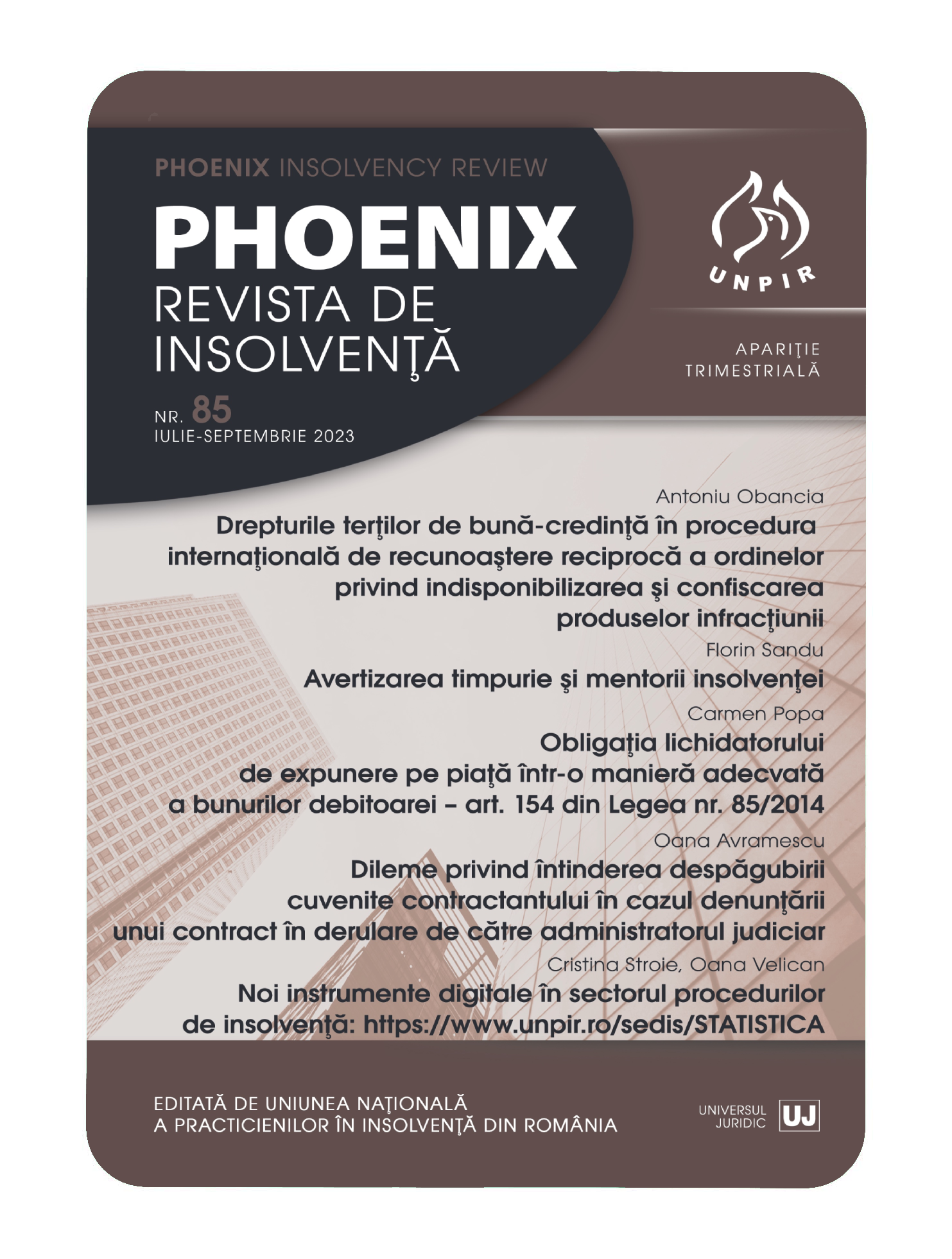Avertizarea timpurie și mentorii insolvenței
Early warning and the mentors of insolvency
Author(s): Florin SanduSubject(s): Law, Constitution, Jurisprudence, Civil Law
Published by: Universul Juridic
Keywords: insolvency prevention; insolvency procedures; companies in distress; restructuring agreement procedure; early warning system; preventive composition; transparency; predictability; protection;
Summary/Abstract: This article delineates the recent modifications made to insolvency prevention legislation and insolvency procedures in accordance with the implementation of the European Parliament and Council Directive 2019/1023 through Law no. 216/2022. This law has not only revised but also augmented Law no. 85/2014 concerning insolvency prevention and proceedings. The focal point of these alterations is to provide assistance to struggling companies, enabling them to sustain their operations and avert insolvency. This is achieved through various mechanisms, such as restructuring agreements or preventive compositions, characterized by their transparency, predictability, and the provision of safeguards for enterprises potentially impacted by their business decisions. The article accentuates the criticality of timely intervention in facilitating company recovery, which can be further enhanced with expert assistance from institutions offering mentorship. This mentorship can catalyze recovery through consultancy services, assistance in negotiations, and fostering effective communication with stakeholders, among other initiatives. The discussion also encompasses significant elements such as the early warning procedure – a provision allowing companies to enact remedial strategies before insolvency becomes an unretractable scenario – and incorporates insights from best practices observed in France and Italy. Furthermore, the article underscores that the strategic incorporation of early warnings and mentorship programs can play a pivotal role in preventing insolvency, safeguarding assets, and preserving stakeholder confidence. Employing these strategies could potentially diminish the financial ramifications associated with insolvency procedures, while retaining the intrinsic value of companies in distress. To round off, the article advocates for the ongoing surveillance of these initiatives, analyzing their effectiveness and repercussions on the economic resurgence of the impacted entities.
Journal: Revista de Insolvenţă Phoenix
- Issue Year: 85/2023
- Issue No: 3
- Page Range: 10-15
- Page Count: 6
- Language: Romanian

